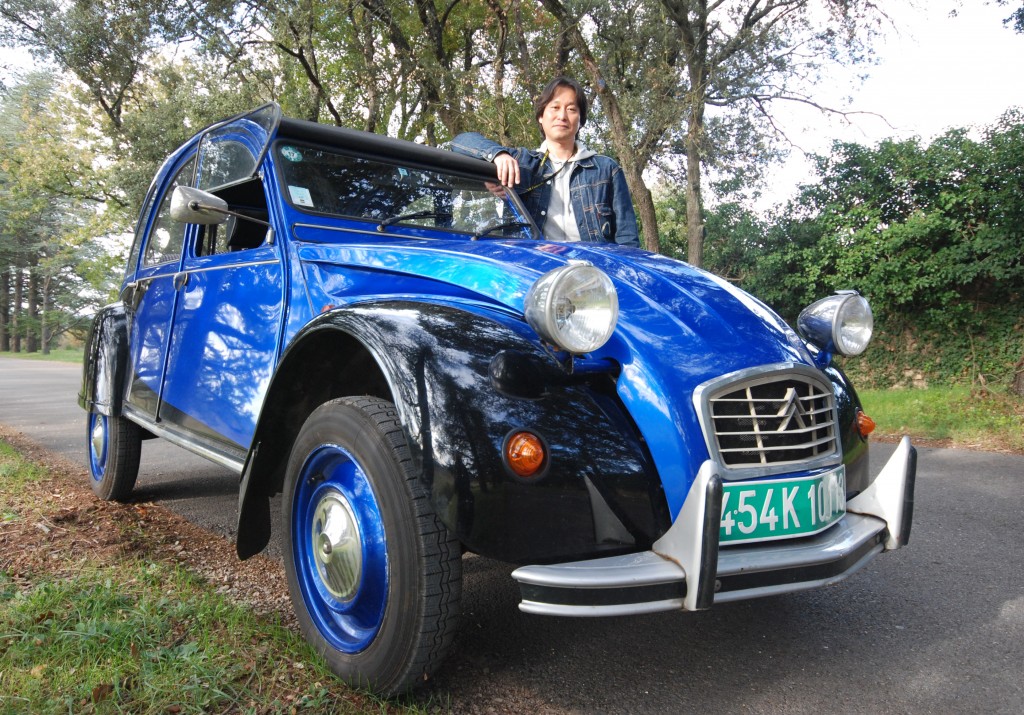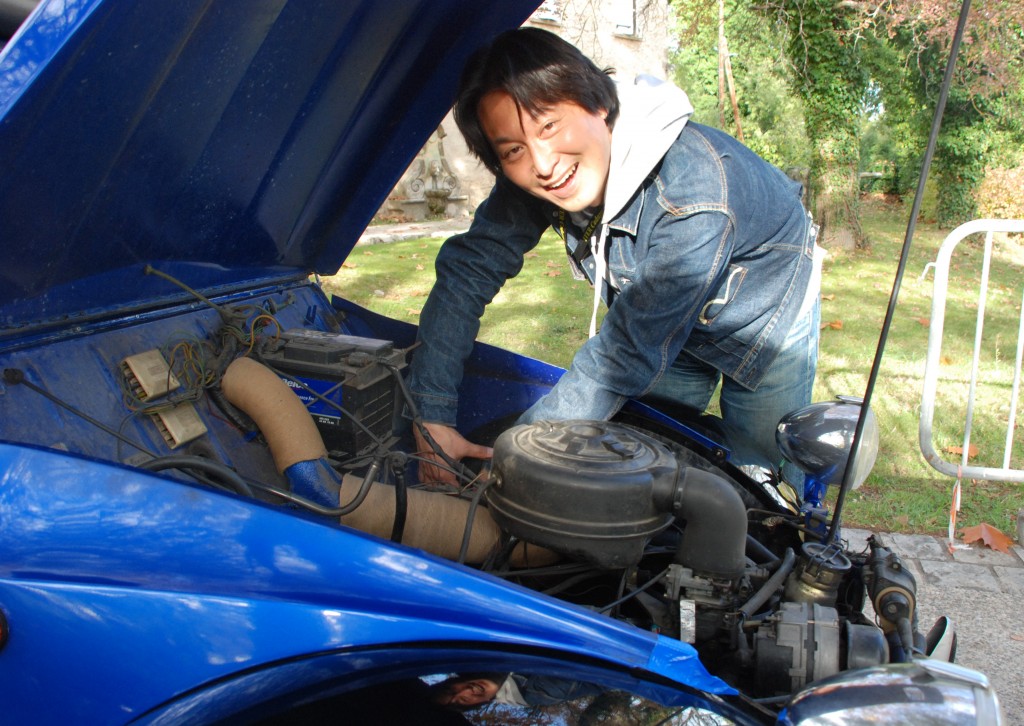
Ten years ago, to celebrate the birth of his daughter, Atsumi designed a new black and blue colour pattern for his beloved 2CV.

In Japan, Atsumi would drive back and forth twice a week between Tokyo and Kyoto—an average of 2,000 km per week.




